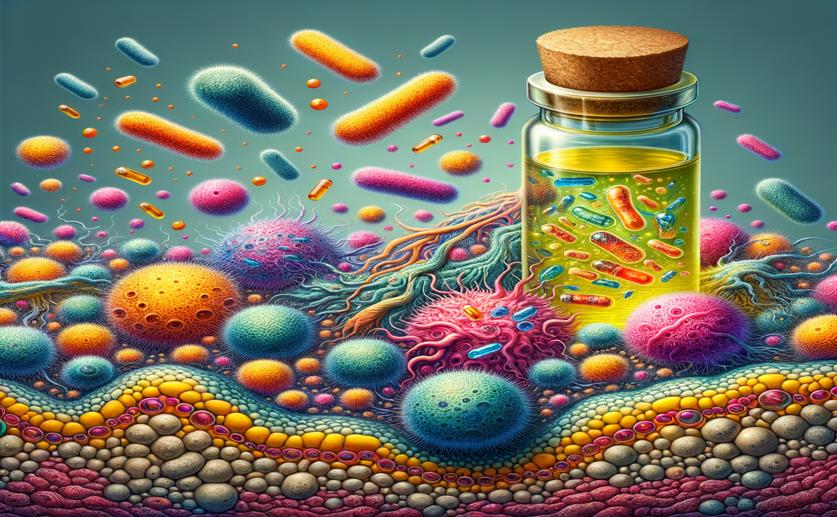
How Essential Oils Fight Resistant Bacteria and Break Down Biofilms
Jenn Hoskins
23rd May, 2024

Image Source: Natural Science News, 2024
Key Findings
- The study from the Center of Biotechnology of Sfax, Tunisia, evaluated the effects of four essential oils on MRSA bacteria
- Essential oils like Peppermint and Geranium showed significant antiadhesive and eradication activities against MRSA biofilms
- These oils also inhibited the synthesis of staphyloxanthin, a virulence factor, making MRSA more susceptible to treatments
References
Main Study
1) Unveiling the impact of selected essential oils on MRSA strain ATCC 33591: antibacterial efficiency, biofilm disruption, and staphyloxanthin inhibition.
Published 22nd May, 2024
https://doi.org/10.1007/s42770-024-01374-2
Related Studies
2) The Cell Wall, Cell Membrane and Virulence Factors of Staphylococcus aureus and Their Role in Antibiotic Resistance.
3) Mutation of sarA in Staphylococcus aureus limits biofilm formation.
Journal: Infection and immunity, Issue: Vol 71, Issue 7, Jul 2003
4) Protective Effect of the Golden Staphyloxanthin Biosynthesis Pathway on Staphylococcus aureus under Cold Atmospheric Plasma Treatment.



 20th May, 2024 | Greg Howard
20th May, 2024 | Greg Howard